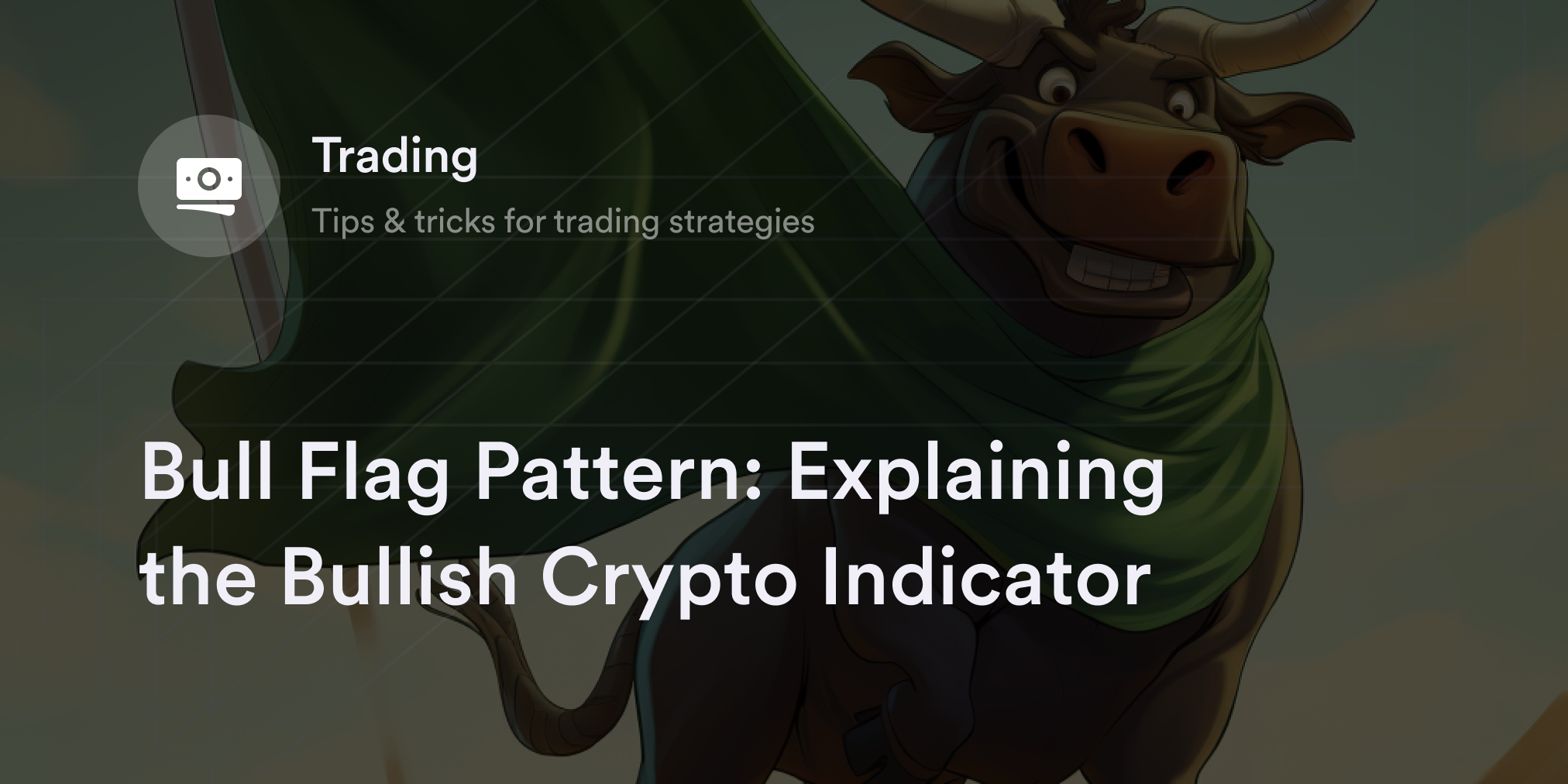


Cryptocurrencies are intangible assets—they have value, but you can't hold them in your hand. To new traders, the seemingly abstract nature of cryptocurrency can lead to confusion.
Unlike traditional assets, cryptocurrencies lack straightforward data points—like earnings reports or independent third party valuation—to back the value of these digital assets. Instead, cryptocurrencies exist on decentralized computer networks (known as "blockchains"), making them more complicated to ascertain a clear value on than traditional assets. In other words, because cryptocurrency is a unique asset class, traders need a unique framework and toolkit to perform market analysis.
So, how does cryptocurrency gain or lose value, and how can traders determine the valuation of digital assets? Although challenging, there are a few key metrics traders use to evaluate prices in the market.
How Is Cryptocurrency Valued?
Similar to traditional assets, cryptocurrencies rise or fall in relation to supply and demand. "Supply" means how much of a product or service is on the open market, while "demand" refers to how many people want it. Whenever demand outweighs supply, the market price for an asset increases. Conversely, market prices fall when there's too much supply and too few buyers.
Since supply versus demand is foundational to all economic activity, it helps to explain what determines cryptocurrency value. As more traders buy a cryptocurrency—provided additional assets do not flood the market's supply—the asset’s price rises. However, if the supply of a cryptocurrency exceeds demand, its market value decreases to a level where traders are willing to purchase it.
While this concept helps explain how cryptocurrencies experience price swings, it doesn't address why these digital assets accrue value in the first place. After all, if no one were interested in purchasing these assets, they wouldn't be worth anything on the marketplace.
Although each cryptocurrency has unique use cases, decentralization is a top value proposition for blockchain-based digital assets. Cryptographer Satoshi Nakamoto created Bitcoin (BTC) primarily to launch a peer-to-peer digital payment network free from the control of governments, central banks, and corporations. The blockchain technology powering BTC and other cryptocurrencies verifies digital payments without centralized intermediaries, which gives holders full custody over their coins.
Unlike government-backed fiat currencies or traditional assets such as stocks, cryptocurrencies exist outside the jurisdiction of governments and financial institutions. For many, the decentralization of blockchains provides a unique trading opportunity and access to revolutionary digital payment networks. For these reasons,traders see value in digital assets and create demand for cryptocurrency.
What Backs a Cryptocurrency's Value?
In most cases, cryptocurrencies are only valuable within their respective blockchain networks. For instance, BTC has a 1:1 value on the Bitcoin blockchain, while Ether (ETH) has a 1:1 value on the Ethereum blockchain. However, BTC and ETH don’t have equivalent worth.
No governments or banks are solely responsible for backing cryptocurrency projects, so each cryptocurrency is its own source of value. If more traders perceive value in a blockchain's decentralization, utility, or security, it's likely the price of its native asset will rise as demand increases on cryptocurrency exchanges. However, if traders perceive issues with a blockchain’s decentralization, utility, or security, it is likely the prices of its native assets will fall as traders look to exit the position. In addition, although different cryptocurrencies trade and are valued separately, declines in the value of one cryptocurrency have in the past led to declines in the values of cryptocurrencies generally. Cryptocurrency values can also correlate with broader sector events (such as collapse of a major cryptocurrency exchange) or broader macroeconomic events (such as interest rate changes or banking sector instability). The primary features that give cryptocurrencies value are the transparency and efficiency of their decentralized blockchain networks.
However, a class of cryptocurrencies called "reserve-backed stablecoins" doesn't rely on blockchain technology for their value. Stablecoins are digital tokens mirroring the price of real-world assets, such as the U.S. Dollar (USD). If a stablecoin project is "reserve-backed," the stablecoin's issuer holds itself out as maintaining equivalent fiat or other reserves in banks and securities to back each stablecoin in existence. Tether (USDT) and USDC are two well-known examples of reserve-backed USD stablecoins. There are risks to stable coins that the price will de-peg from the U.S. Dollar or other asset it tracks, causing volatility that could result in losses for a cryptocurrency trader. The most notable instance of a stablecoin de-pegging is when TerraUSD collapsed causing significant losses for traders.
How Does a Cryptocurrency's Value Increase and Decrease?
The only way for a cryptocurrency’s value to increase is if market demand exceeds a crypto's supply. As a result, all explanations behind an asset’s rise should positively correlate with buying activity.
There are various potential reasons behind a cryptocurrency's price increase and decrease, but by the economics of supply and demand, each must inspire more traders to put their money into a project—that’s how value (market price) goes up. Conversely, some of the risks associated with cryptocurrencies can lead to value decrease. Prices for cryptocurrencies can also be highly volatile, resulting in rapid and extreme price movements. Here are some examples of factors that can impact price fluctuation:
Network activity: Blockchain analytics firms—such as Chainalysis—constantly monitor total wallet addresses and average daily transactions on large blockchains, including Bitcoin and Ethereum. These data points help traders determine how many people use a blockchain and when network activity increases or decreases. Generally, when more people use a blockchain (implying increased trading, transactions, and purchasing), it has a positive impact on the value of the underlying cryptocurrency. On the other side of this, a decrease in network activity would likely have a negative impact on a cryptocurrency’s underlying value that results in a lower price.
Regulation: Governments don't control cryptocurrency, but they influence public perception and a cryptocurrency's potential uses via legislation. For example, when El Salvador recognized Bitcoin as legal tender in 2021, it triggered a surge of optimism for BTC's potential use cases for trading and daily currency. By contrast, when China banned Bitcoin mining the same year, traders feared increased cryptocurrency restrictions and slowed adoption. The more countries introduce favorable cryptocurrency regulations that allow for the growth and development of cryptocurrency projects, the more likely digital assets will rise in value. However, a risk of purchasing crypto assets remains that regulation that strictly prohibits or limits access to cryptocurrency projects would decrease supply and demand, resulting in a lower price. In addition, regulation that imposes registration and compliance requirements on cryptocurrency trading could adversely affect prices of cryptocurrencies.
Business adoption: Compared to fiat currencies, cryptocurrencies aren't as widely accepted as a legal tender or a means of payment. However, companies like Tesla have put Bitcoin on their balance sheets, and businesses like McDonald's have begun experimenting with cryptocurrency payments. As more companies become involved with relevant trading or payment solutions, interest in cryptocurrency may increase and drive greater demand. If businesses decline to adopt cryptocurrency or move away, this could signal to traders that the value in the underlying assets will not be sustained, thus increasing the risk for any cryptocurrency trader.
More use cases: Besides P2P payments, blockchain developers are working on dozens of potentially valuable use cases for digital assets. For example, decentralized finance (DeFi) platforms like dYdX offer a way for eligible users to trade cryptocurrency without relying on central brokers. There's also a growing interest in digital collectibles like non-fungible tokens (NFTs) and blockchain-based video games like "Axie Infinity." Growing cryptocurrency utility can drive demand and value, incentivizing more traders to become holders.
Trust: The cryptocurrency ecosystem doesn't have the same credibility as long-standing fiat currencies or traditional institutions , and because the cryptocurrency industry is less regulated than traditional markets, scams and hacks are a persistent problem (more on this below). A consistent lack of trust in a blockchain, digital asset, or project can decrease buyer demand, resulting in a lower price and overall value. More traders need to feel comfortable about a blockchain protocol's security standards to increase a cryptocurrency's value.
Burning and minting mechanisms and dilution and inflation: In crypto, "burning" means removing cryptocurrency from the total supply, and “minting” means adding cryptocurrency to the total supply. Some blockchain protocols use burning mechanics to add deflationary pressure to their coin issuance schedule. For example, Ethereum burns a portion of ETH in every transaction fee, reducing the total amount of ETH entering the market daily. If demand for a coin like ETH remains steady or increases, these burning mechanics positively impact the asset’s price as supply is decreased. If a cryptocurrency mints more coins or tokens, or the project team or other parties holding large amounts of a coin or token sell large portions of their stake, then there will be more supply in the market, reducing the value of each individual coin. Traders should research a crypto project’s team to evaluate whether they have before minted more tokens, or are likely to do so in the future so the trader can better establish what the relevant risks with their purchase are
Comparisons to competing payment platforms: Cryptocurrencies compete with many traditional financial services, including fiat currencies, remittance services, banks, and fintech apps. If customers view cryptocurrencies as offering more attractive solutions (e.g., lower fees and faster transaction speeds) and acquire market share from other payment services, they may see an increased demand and may be more valuable to traders. The risks associated with cryptocurrencies, however, may lead customers to continue to choose traditional payment platforms because of their greater level of regulation, and insurance protections should anything go wrong.
What Are the Risks Associated with Cryptocurrencies?
Cryptocurrencies involve various risks, some of which may be substantial. The principal risks include:
Risks of hacks: Hackers can break into blockchain nodes and corrupt a blockchain by taking control of 51% of the chain's power. There are many examples of chains (such as Ethereum Classic and Bitcoin Gold) that have struggled with these types of hacks. However, as blockchain networks grow larger and more decentralized, node operators have more incentive to play by the rules. The cost of attacking a blockchain becomes increasingly prohibitive as more computers join the network. Other types of hacks include attacks on a trader’s hot or cold wallet or on exchanges, both resulting in the loss of traders’ funds. Getting involved in the cryptocurrency world also comes with fraud risks, such as new token or cryptocurrency projects that later turn out to be scams, leaving traders with worthless holdings.
Volatility. Traders should be aware that cryptocurrencies can be subject to rapid and substantial value shifts due to the highly speculative nature of this sector, which can result in substantial losses. Another source of volatility for cryptocurrency prices is the liquidity (and relative liquidity) of cryptocurrency markets. The overall size of many cryptocurrency markets can be significantly smaller than markets for other types of assets, which can limit liquidity and increase volatility.
Lack of centralized trading or pricing: Cryptocurrencies can be traded through privately negotiated transactions and through numerous cryptocurrency exchanges and intermediaries around the world, many of which are not regulated. The lack of a centralized pricing source poses valuation challenges, especially when prices vary significantly in different markets. For example, because cryptocurrency markets are multi-jurisdictional and distributed, local and regional events can affect the liquidity, prices and volatility of cryptocurrencies in different jurisdictions in unexpected ways. In addition, dispersed liquidity can pose challenges for market participants trying to exit a position, especially during times of stress, which can lead to increased volatility.
Concentrated or opaque ownership: The liquidity of cryptocurrencies and the volatility of cryptocurrency prices also depend on the concentration of owners of a cryptocurrency or the traders in such cryptocurrency. There is little transparency in the ownership of or trading interest in most cryptocurrencies, nor are there generally limits on concentrated ownership or trading interest. Ownership of or trading in particular cryptocurrencies can be concentrated in a limited number of countries or regions and may be controlled by a small number of persons or entities. Events in such countries and regions, or events that affect such persons or entities, could have a disproportionate impact on the prices of virtual currencies. This includes political and economic events. Greater concentration in ownership or trading interest can also lead to heightened volatility due to sharp swings in the level of supply or demand. High levels of concentration can also make a market susceptible to manipulation or distortion.
Transaction fees: Many cryptocurrencies include a fee for participating in validating transactions on the blockchain, whether through the operation of a validator node on a proof-of-stake chain, or mining on a proof-of-work chain. Paying a fee is generally necessary to ensure that a transaction is promptly recorded on a blockchain or distributed ledger. The amounts of these fees are subject to market forces, and it is possible that the fees could increase substantially during a period of stress, which could increase transaction costs and the time it takes to build the relevant block on a blockchain or distributed ledger where the relevant cryptocurrency transfer is recorded
No insurance protections: Cryptocurrency transactions and assets are not covered by any government or private insurance funds. If an individual lose their crypto funds in engaging in financial transactions such as payments or remittances, their coins or tokens are likely gone for good. Major losses, sometimes due to fraud or hacks, have led to the collapses of multiple major cryptocurrency exchanges, lenders, brokers, and funds, which have in turn caused traders and others to suffer significant losses, without any protection from public or private insurance schemes.
This brief summary cannot identify all of the risks related to cryptocurrency transactions and holdings, which will be subject to other risks as well.
How to Calculate Cryptocurrency Value
A cryptocurrency's value primarily depends on unquantifiable factors such as trust, trader demand, and public perception. However, there’s a simple formula traders use to determine the current market price of a cryptocurrency:
Funds currently circulating in a cryptocurrency / Circulating supply of coins or tokens = Market price per coin or token
The first variable measures how much money is currently trading in a cryptocurrency project, while the "circulating supply" is the number of coins currently in the open market. For example, suppose $450 billion USD trades in Bitcoin and there are 19.3 million BTC in circulation. The value of one BTC could be determined as follows:
$450 billion USD /19.3 million BTC = $23,316 USD per BTC
Traders can find the data points needed to calculate a cryptocurrency's market price on third-party crypto price aggregator websites. Popular sites, such as CoinMarketCap and CoinGecko, provide real-time data on the market caps and circulating supplies of thousands of cryptocurrencies.
Discover More Cryptocurrency Education on dYdX
Cryptocurrency and blockchain are exciting yet complex developments. At dYdX, we want to make learning about the world of digital assets as simple as possible. For more easy-to-understand guides on cryptocurrencies, check out the dYdX Academy and to learn more about our product, take a look at our blog.
dYdX also offers eligible traders a decentralized cryptocurrency exchange with access to Bitcoin and altcoin derivatives, with access to up to 20x leverage. Head over to our main page to start trading on dYdX today!
Disclaimer
The content of this article (the “Article”) is provided for general informational purposes only. Reference to any specific strategy, technique, product, service, or entity does not constitute an endorsement or recommendation by dYdX Trading Inc., or any affiliate, agent, or representative thereof (“dYdX”). Use of strategies, techniques, products or services referenced in this Article may involve material risks, including the risk of financial losses arising from the volatility, operational loss, or nonconsensual liquidation of digital assets. The content of this Article does not constitute, and should not be considered, construed, or relied upon as, financial advice, legal advice, tax advice, investment advice, or advice of any other nature; and the content of this Article is not an offer, solicitation or call to action to make any investment, or purchase any crypto asset, of any kind. dYdX makes no representation, assurance or guarantee as to the accuracy, completeness, timeliness, suitability, or validity of any information in this Article or any third-party website that may be linked to it. You are solely responsible for conducting independent research, performing due diligence, and/or seeking advice from a professional advisor prior to taking any financial, tax, legal, or investment action.
You may only use the dYdX Services in compliance with the dYdX Terms of Use available here, including the geographic restrictions therein.
Any applicable sponsorship in connection with this Article will be disclosed, and any reference to a sponsor in this Article is for disclosure purposes, or informational in nature, and in any event is not a call to action to make an investment, acquire a service or product, or purchase crypto assets. This Article does not offer the purchase or sale of any financial instruments or related services.
By accessing this Article and taking any action in connection with the information contained in this Article, you agree that dYdX is not responsible, directly or indirectly, for any errors, omissions, or delays related to this Article, or any damage, injury, or loss incurred in connection with use of or reliance on the content of this Article, including any specific strategy, technique, product, service, or entity that may be referenced in the Article.







